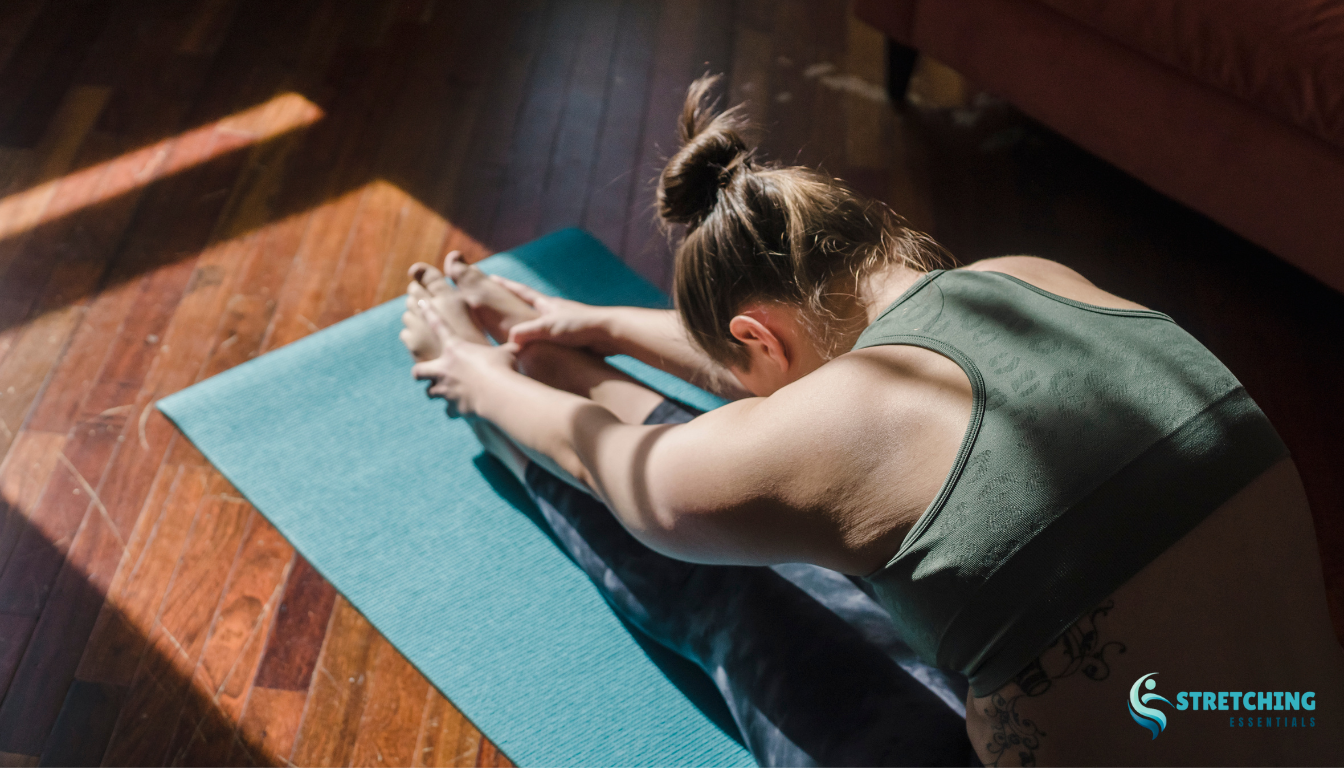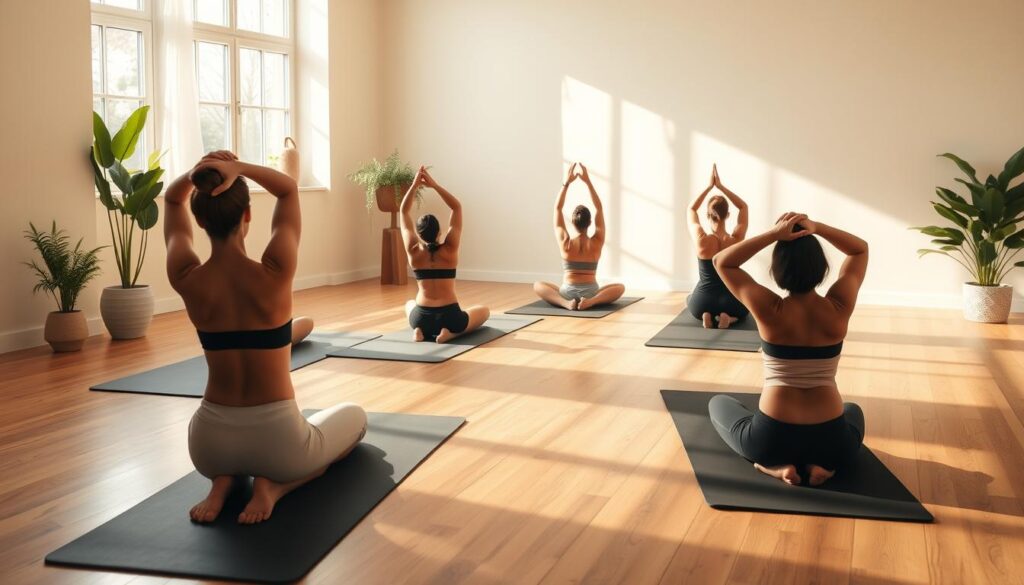Stretching the lower back muscles can be tricky—are you confident you’re doing it in a way that won’t worsen your pain?
Stretching the lower back muscles is more than a simple remedy for discomfort; it’s a transformative approach to wellness. For many middle-aged professionals and workers, persistent lower back pain can disrupt daily life, but prioritizing these stretches can improve mobility, reduce pain, and enhance overall well-being. By integrating specific stretches into your routine, you can not only enhance recovery but also fortify your foundation for a pain-free lifestyle. These subtle movements play a pivotal role in promoting lasting back health and ensuring your path to wellness is both safe and effective.
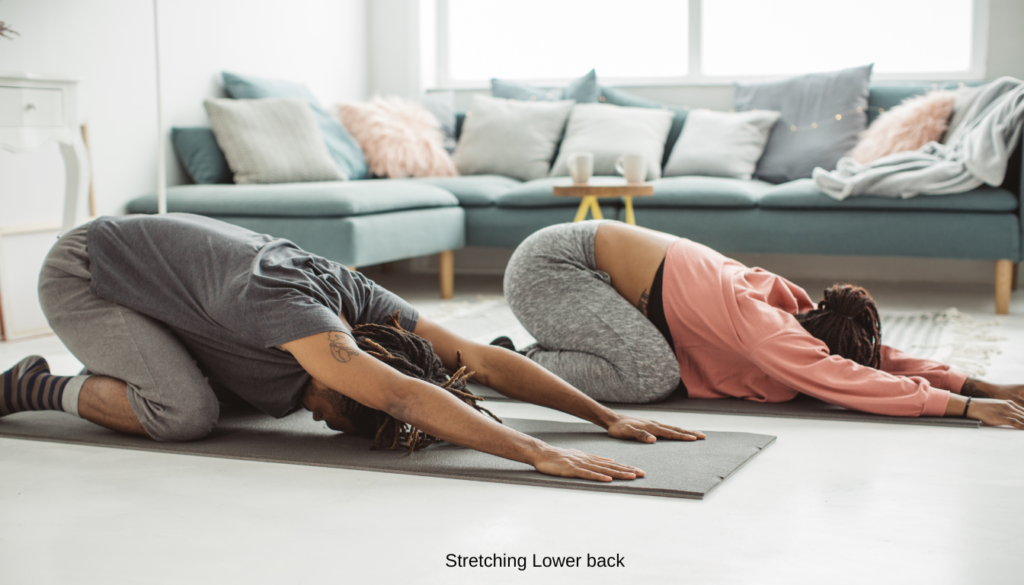
But be warned: not all stretches are created equal. As beneficial as these maneuvers can be, improper technique might set you back in your journey to a healthier lower back. Being informed and executing stretches correctly is crucial to reaping the full benefits. Let’s explore the right methods to help your back support you as reliably as you need it to—safely and effectively.
Check out these tips that can banish your lower back pain now!
Stretching The Lower Back: A Key to Overall Wellness
Keeping your lower back health in check is key for your overall well-being. The lower back is vital for simple actions like bending, twisting, walking, and lifting. Strengthening and stretching this area boosts core stability and spinal health. This can lower the chance of injuries and long-term health issues.
Why should we focus on the lower back? It supports your upper body, including important spine structures. A healthy lower back leads to a happier, more active life. Here’s how a strong lower back can improve your overall health:
- Improved Posture: A strong lower back keeps your body aligned, preventing slumping that causes spinal stress and pain.
- Increased Mobility: Better core stability means you can move more freely, making everyday tasks and sports better.
- Injury Prevention: Lower back health is key to avoiding injuries by absorbing shocks and lessening body weight on other parts.
- Enhanced Quality of Life: Without back pain, you can enjoy more activities, visit the doctor less, and save on healthcare costs.
| Benefits | Impact on Wellness |
|---|---|
| Better balance and stability | Leads to fewer falls and injuries |
| Increased core strength | Enhances ability to perform daily and athletic activities |
| Reduced back pain | Decreases the need for medication and invasive treatments |
Focusing on your lower back health isn’t just about your spine—it’s about enhancing your overall well-being. A strong, healthy lower back supports your body, helps you stay active, and minimizes the effects of aging, allowing you to enjoy a healthier, more balanced life.
Understanding Lower Back Pain and Its Common Causes
Lower back pain affects millions every year, often disrupting daily life and diminishing quality of life. Understanding the common causes of back pain, such as poor posture or incorrect movements, is the first step to preventing and managing it. Incorporating practices like stretching the lower back into your routine can significantly alleviate discomfort and improve spinal health.
Identifying the Factors Behind Lower Back Discomfort
There are many factors that contribute to lower back pain, including poor lifting techniques, prolonged sitting, and sudden injuries. These actions place undue stress on the spine, disrupting the balance of muscles and bones essential for spinal health. Regular stretching of the lower back can help counteract these stresses, maintaining flexibility and reducing tension.
Good posture and staying active are crucial for avoiding back problems. Low-impact exercises combined with stretching the lower back can strengthen your core, improve flexibility, and provide much-needed relief from lower back pain.
The Role of Posture in Maintaining a Healthy Spine
Good posture isn’t just about appearances; it plays a critical role in your spine’s health. Proper posture minimizes stress on the spine and evenly distributes weight, reducing the risk of back problems. Stretching the lower back supports spinal alignment and keeps the muscles around the spine flexible and strong especially if it’s added to your routine.
Experts recommend ergonomic furniture, regular movement breaks, and consulting healthcare professionals for personalized advice. Combined with lower back stretching, these habits can ensure a healthier, pain-free spine.
| Factor | Impact on Spine | Preventive Measures |
|---|---|---|
| Poor Lifting Techniques | Increases strain on lower back | Use proper form and tools |
| Sedentary Lifestyle | Weakens core muscles, exacerbating pain | Regular stretching and exercise |
| Bad Posture | Leads to uneven spinal pressure | Ergonomic workplace adjustments |
By tackling these issues, you can improve your life and keep your spine healthy. Being active in your physical health is crucial for lower back pain relief.
How Stretching The Lower Back Improves Mobility and Flexibility
Doing lower back stretches is more than just easing pain. It’s key to boosting your mobility and flexibility. Adding lower back flexibility exercises to your day helps your body move better in important areas.
Stretching the lower back boosts blood flow to the spine. This can make muscles less stiff and painful. Regular stretching brings nutrients and oxygen to muscles, helping them heal and stay healthy. You’ll likely feel more flexible and less sore when moving.
- Lower back stretches keep muscles flexible, strong, and healthy.
- Flexibility here is key for moving hips and upper body freely.
- Stretching often stops muscles from getting too tight, which can hurt or cause injury.
Now, let’s explore some exercises to boost your lower back health.
| Exercise | Description | Benefits |
|---|---|---|
| Knee-To-Chest Stretch | A relaxing stretch that focuses on lengthening the lower back and loosening tight muscles. | Releases lower back tension and improves flexibility. |
| Seated Spinal Twist | A twisting movement designed to improve spinal mobility and target stiffness in the back muscles. | Increases spinal mobility and stretches the back muscles. |
| Pelvic Tilt | A core-engaging movement that stabilizes the pelvis and strengthens abdominal muscles. | Strengthens abdominal muscles and relieves pain in the lower back. |
| Cat-Cow Stretch | A dynamic flow between two yoga poses to improve flexibility and relieve spinal tension. | Improves spine flexibility and reduces lower back tension. |
| Child’s Pose | A deeply relaxing stretch that gently lengthens the spine while calming the mind. | Stretches the lower back, hips, and thighs while promoting relaxation. |
| Bird Dog | A balancing exercise that activates the core and strengthens the lower back and stabilizing muscles. | Enhances stability, strengthens core muscles, and reduces strain on the lower back. |
Adding these simple lower back flexibility exercises to your daily life can keep your back healthy and mobile. Always do exercises right and slowly to avoid harm. Starting to stretch regularly is the first step to a more agile and pain-free back.
Check out these tips that can banish your lower back pain now!
Beginners Guide to Lower Back Stretches
If you’re new to stretching and want to focus on your lower back, starting with the right techniques is essential for effectiveness and safety. This guide offers a comprehensive introduction to stretching the lower back for beginners. It covers foundational stretches that you can easily incorporate into your daily routine to improve flexibility, reduce tension, and enhance core strength.
Getting Started with Basic Stretches for the Lower Back
Begin your journey by stretching the lower back with these simple yet effective exercises. Whether you’re aiming for pain relief, better mobility, or stress reduction, these stretches are beginner-friendly and adaptable for different fitness levels. Remember to perform each stretch in a slow, controlled manner, avoiding any sudden or jerky movements.
Knee-to-Chest Stretch
Why It Works: A physiotherapist’s go-to, this stretch alleviates lower back tension and promotes flexibility.
How to Do It: Lie flat on your back and gently pull one knee towards your chest while keeping the other leg extended and relaxed. Hold for 20-30 seconds, then switch sides.
When to Use It: Ideal after sitting for extended periods or as part of a morning stretching routine.
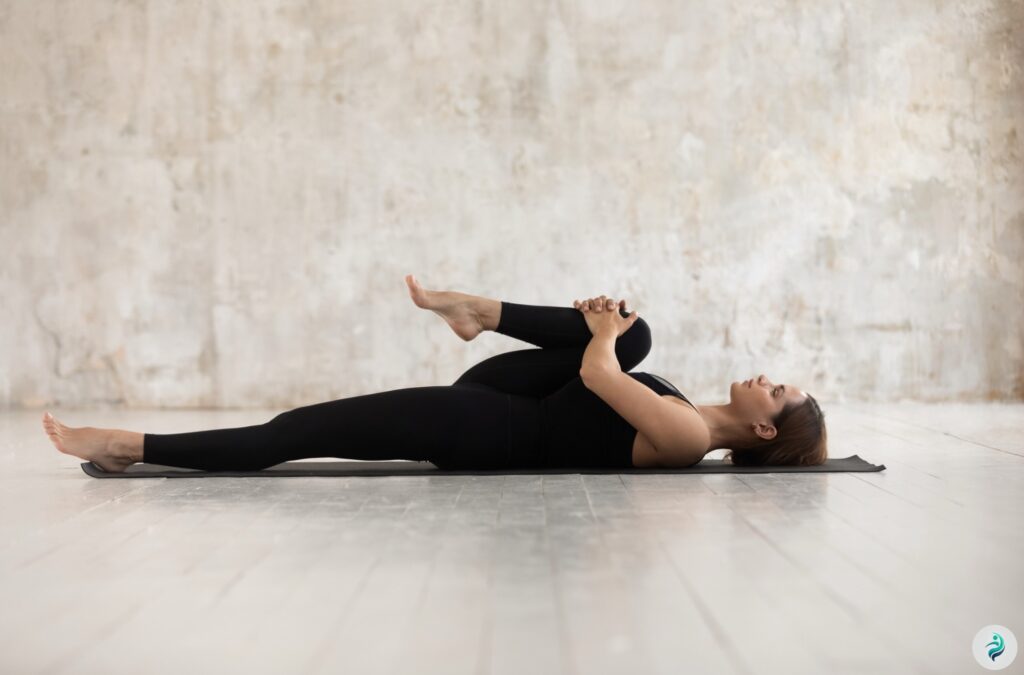
Seated Spinal Twist
Why It Works: This stretch improves spinal mobility and targets tension in the back muscles.
How to Do It: Sit on the floor with your legs extended. Cross one leg over the other and place the opposite elbow on the outside of your bent knee. Slowly twist your torso towards the bent knee.
When to Use It: Perfect after a long day to release tension and realign your spine.

Pelvic Tilt
Why It Works: This gentle movement strengthens the abdominal muscles and stabilizes your lower back, relieving pain caused by muscle imbalances.
How to Do It: Lie on your back with your knees bent and feet flat. Tighten your stomach and press your lower back into the floor. Hold for a few seconds before relaxing.
When to Use It: Add this to your warm-up routine or as a cool-down stretch to reset your posture.
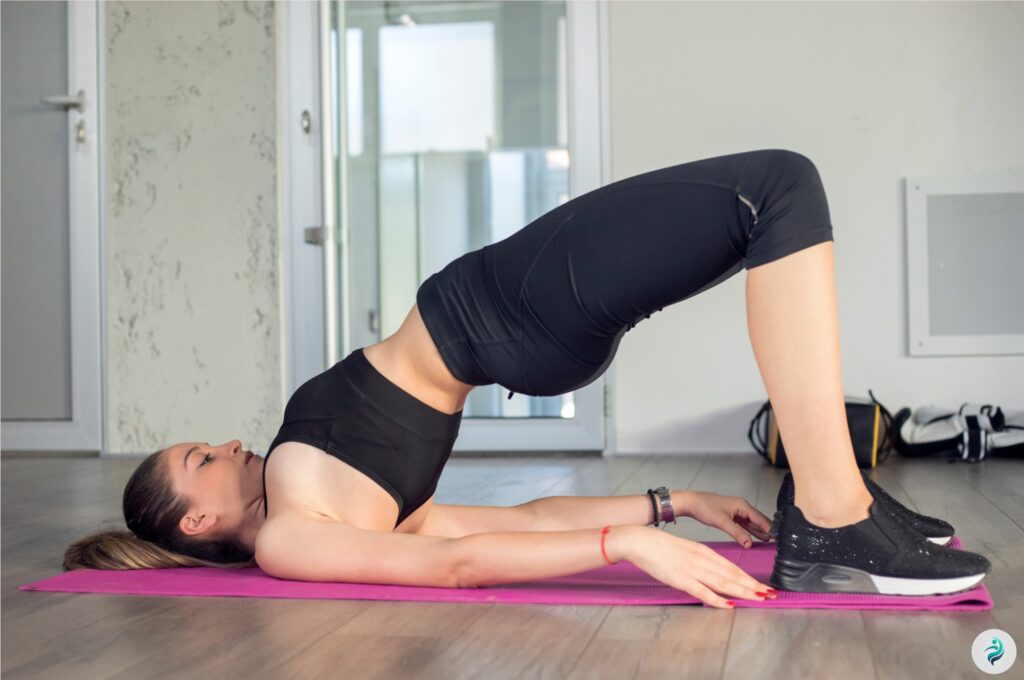
Cat-Cow Stretch
Why It Works: A yoga classic, this stretch enhances spinal flexibility and soothes lower back tightness.
How to Do It: Begin on hands and knees. Arch your back upwards (cat pose), then slowly lower your belly and lift your head (cow pose). Repeat for 5-10 cycles.
When to Use It: Great as a morning warm-up or after heavy lifting to restore spine mobility.
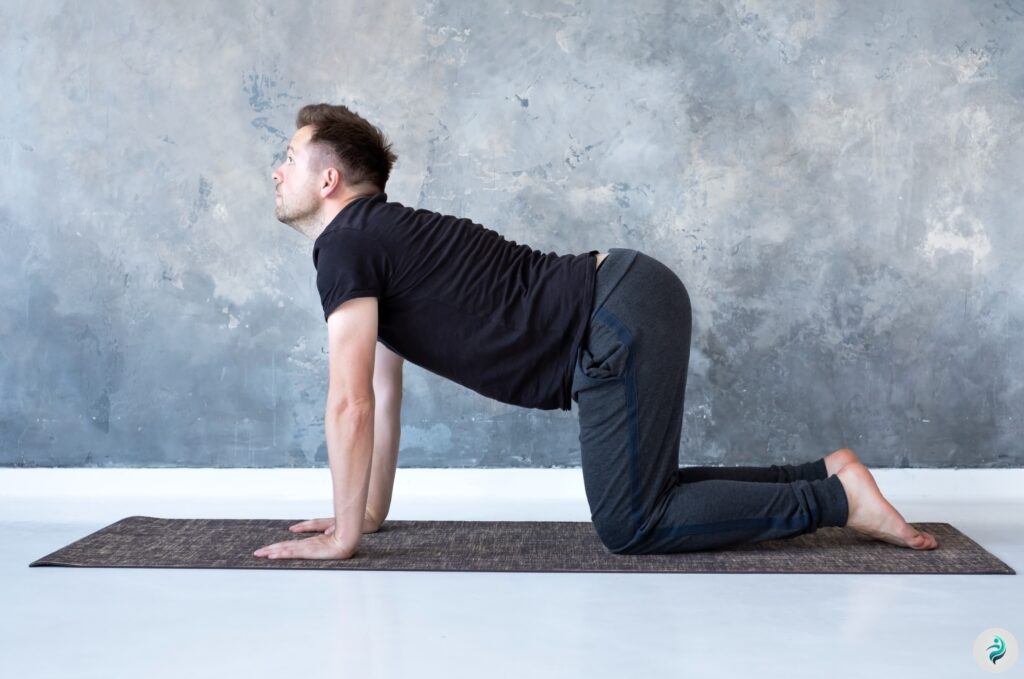
Child’s Pose
Why It Works: This calming stretch lengthens the lower back and gently opens up the hips.
How to Do It: Sit back on your heels, extend your arms forward, and lower your torso to the ground. Relax into the position for 30 seconds to 1 minute.
When to Use It: Use this stretch to relax and unwind, especially before bed.
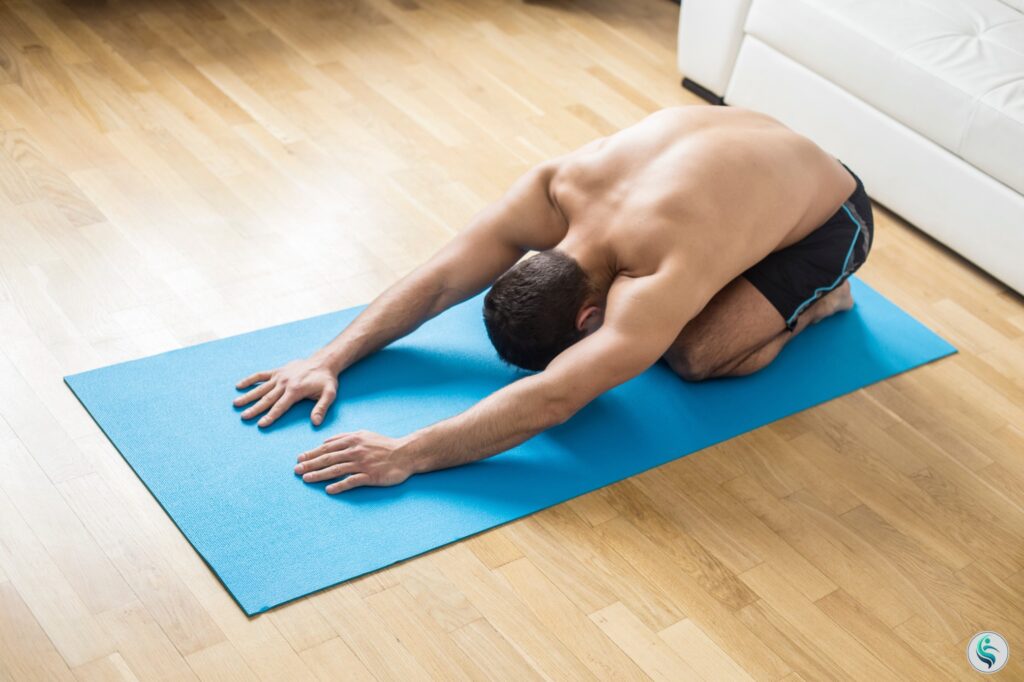
Bird Dog
Why It Works: This dynamic stretch improves core stability and strengthens the lower back, reducing the risk of future injuries.
How to Do It: On hands and knees, extend one arm and the opposite leg simultaneously while keeping your back flat. Hold for a few seconds, then switch sides.
When to Use It: Incorporate this into your workout for strength-building and stability.
Tips for Stretching Safely
- Warm-Up First: Always begin with light movements to increase blood flow and prepare your muscles.
- Listen to Your Body: Stretch only to the point of mild discomfort, never pain.
- Be Consistent: Regular practice yields the best results for flexibility and pain relief.
- Consult a Professional: If you’re recovering from an injury, seek guidance to ensure proper technique.
By following these guidelines and regularly stretching the lower back, you’ll strengthen and flex your lower back muscles. Remember, consistency is key in any fitness endeavor, and safety should always come first in your stretching routine.
Check out these tips that can banish your lower back pain now!
Doing these stretching techniques regularly helps with pain and makes your back stronger.
Stretching The Lower Back FAQs…
Once again, here are some common questions integrated as FAQs.
Why is stretching the lower back important for my recovery and wellness?
Stretching the lower back can greatly improve your health. It boosts mobility, reduces pain, and enhances your life quality. It’s key to a pain-free life and helps avoid common back problems.
What is the role of lower back health in my overall wellness?
A healthy lower back is essential for good posture and mobility. It supports the upper body and prevents injuries. This is crucial for your overall health and spinal well-being.
What are common causes of lower back pain?
Lower back pain can come from many sources. Sedentary lifestyles, poor lifting, injuries, or stress are common causes. Poor posture also plays a big role in back issues.
How does stretching the lower back improve my mobility and flexibility?
Stretching the lower back boosts flexibility and mobility. It increases blood flow, reduces muscle tension, and loosens muscles and ligaments. This helps alleviate pain and stiffness, improving back function.
What are some basic stretches for beginners looking to improve their lower back health?
Beginners can start with simple stretches. Try the knee-to-chest stretch, seated spinal twist, pelvic tilt, cat-cow stretch, child’s pose, and bird dog. These stretches target the lower back and are low-risk when done right.
How can I safely incorporate lower back stretches into my daily routine?
Begin with basic stretches and ensure proper form. Add them to your morning routine, workday breaks, or after workout.
How can I stretch my lower back without causing injury?
To stretch safely, start with a warm-up and focus on proper form. Move slowly and gently into stretches, and don’t overdo it. Breathing deeply helps relax muscles and makes stretches more effective.
Check out these tips that can banish your lower back pain now!
Conclusion
We’ve delved into the benefits of stretching the lower back to maintain a healthy spine. Incorporating lower back stretches into your routine can alleviate pain, improve flexibility, and enhance your energy levels, helping you feel more active and refreshed every day.
Learning the right stretching techniques is key. It helps you stay flexible and avoid injuries. This knowledge is essential for your back’s health.
Maintaining a healthy back starts with regular stretching. Incorporate a mix of dynamic and static stretches into your daily routine to keep your back flexible and strong. Dedicate just 30 minutes a day, stay consistent, and you’ll see lasting benefits.
Remember, getting better takes time and effort. Be patient and keep stretching. Your back will thank you.
By making stretching a part of your daily life, your back will show the benefits. Use what you’ve learned to take care of your back. This way, every movement will be easier and more comfortable.
Let’s live a life where every stretch brings us closer to better back health. Aim for a life full of energy and wellness.
Check out these tips that can banish your lower back pain now!
